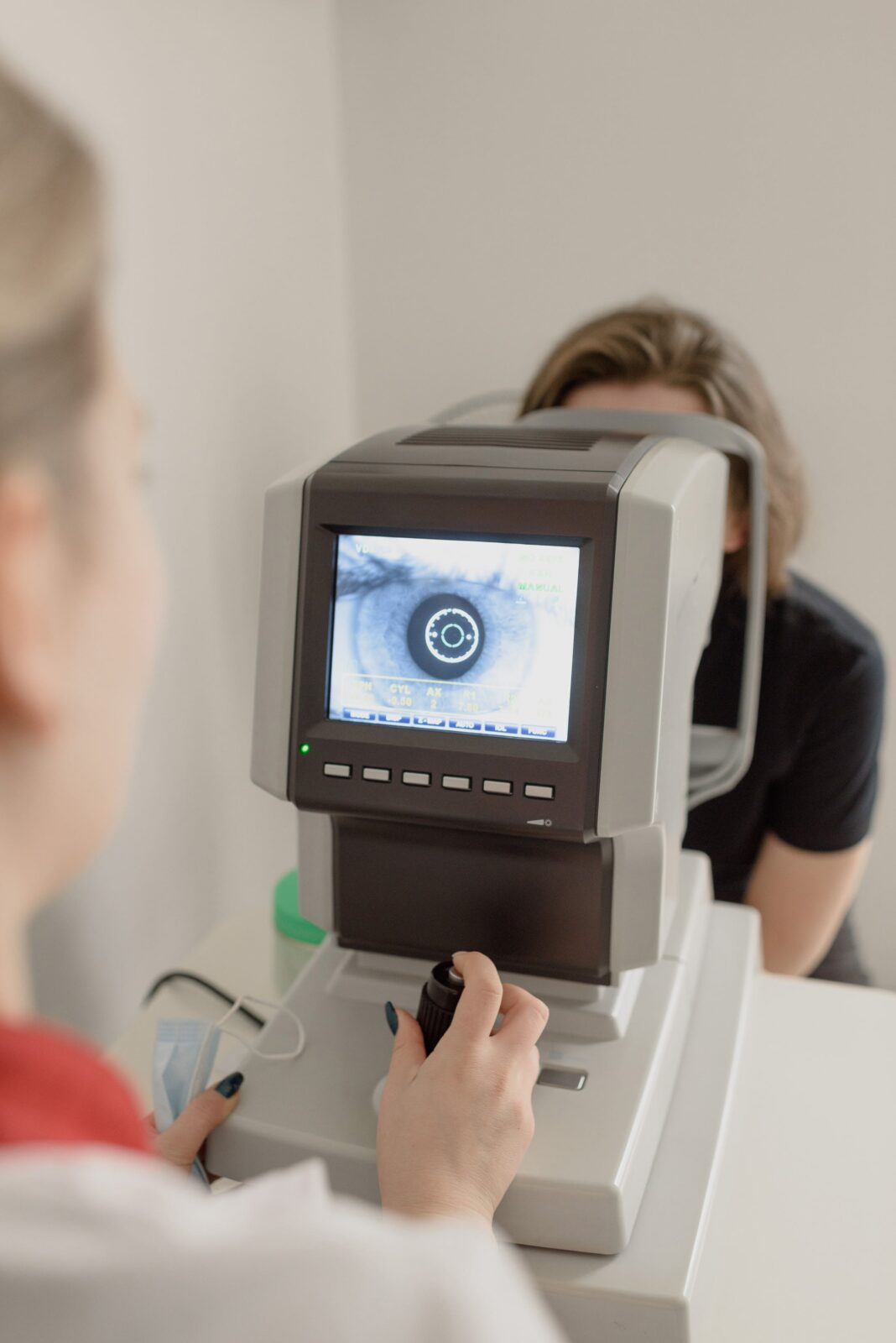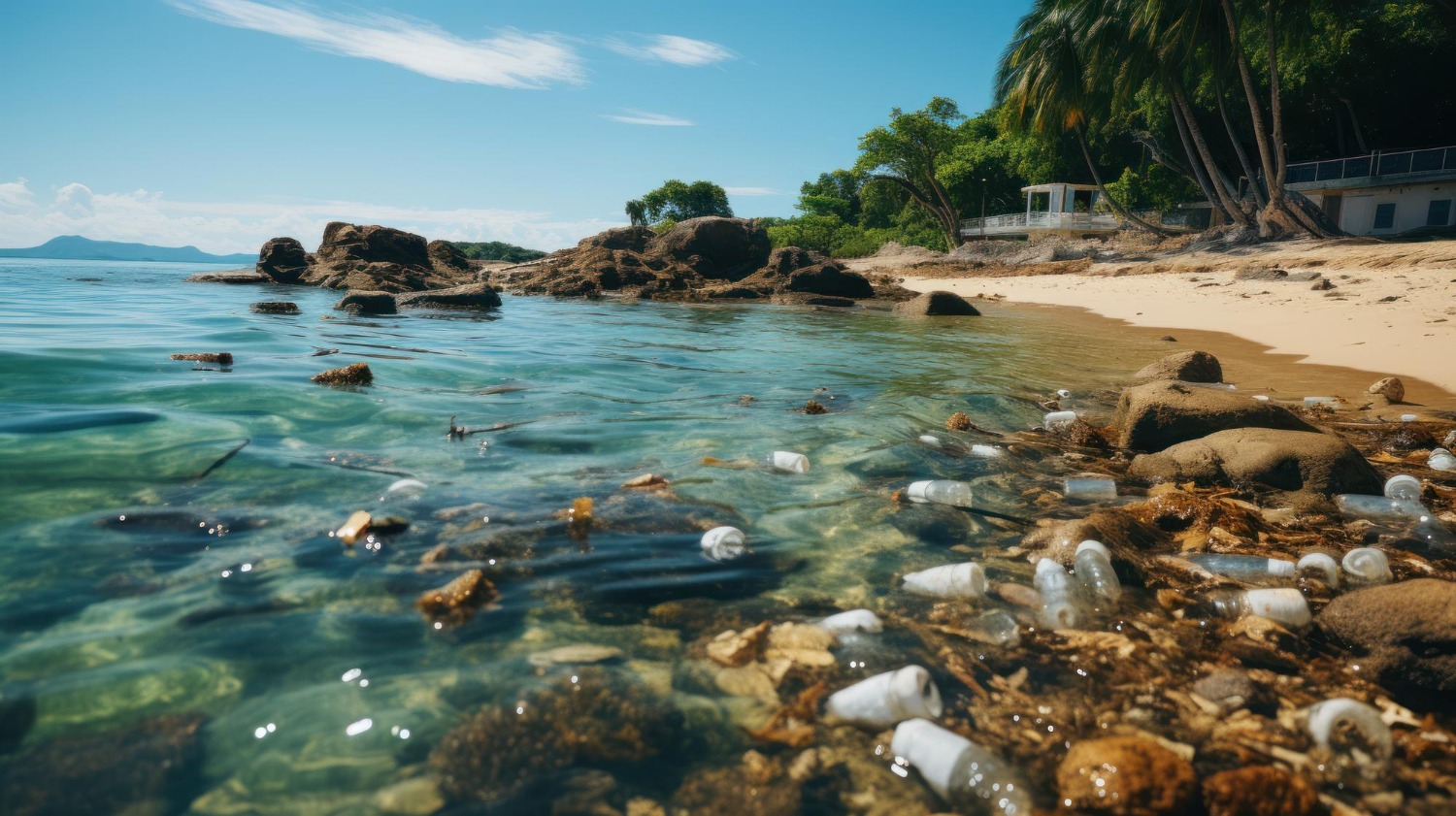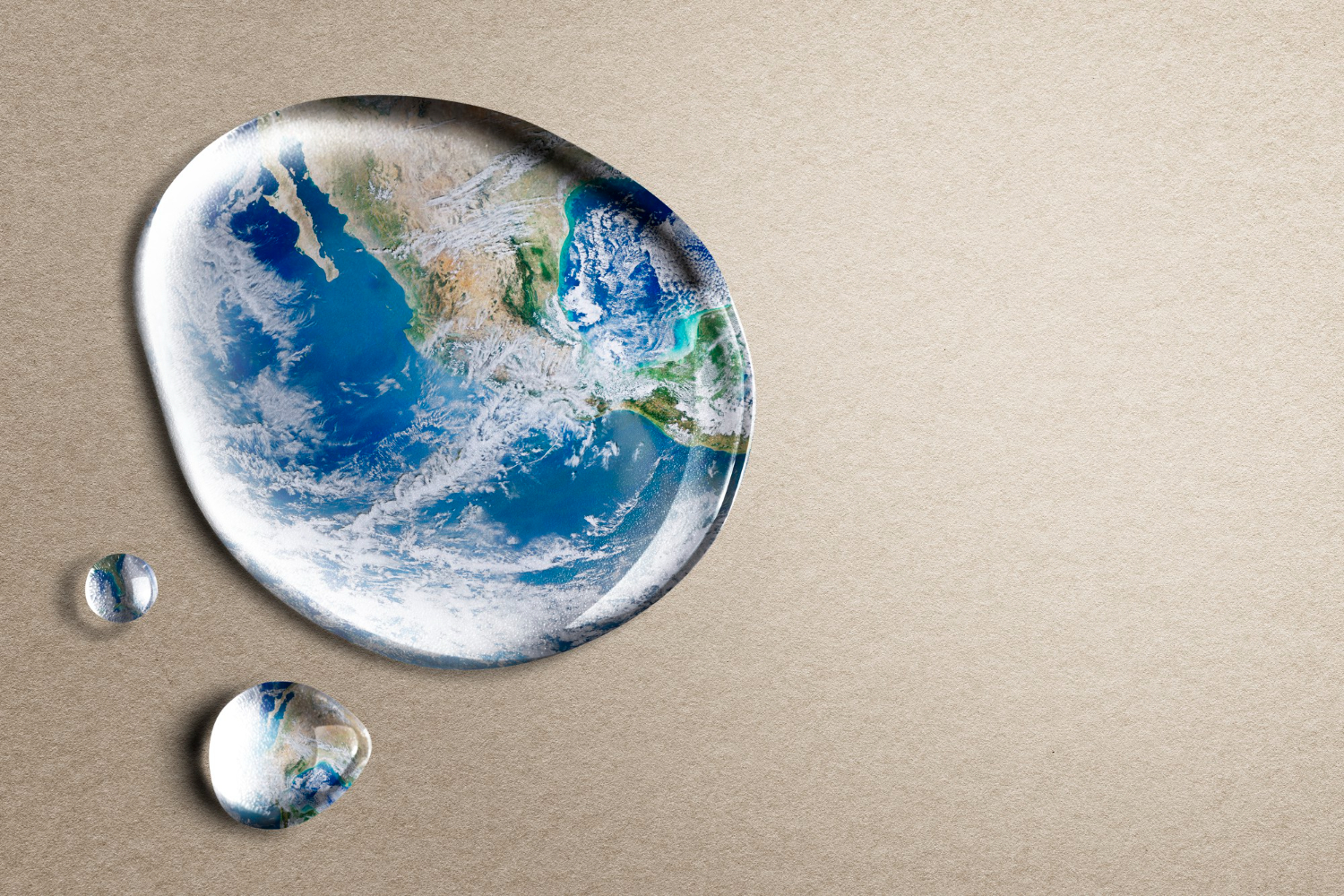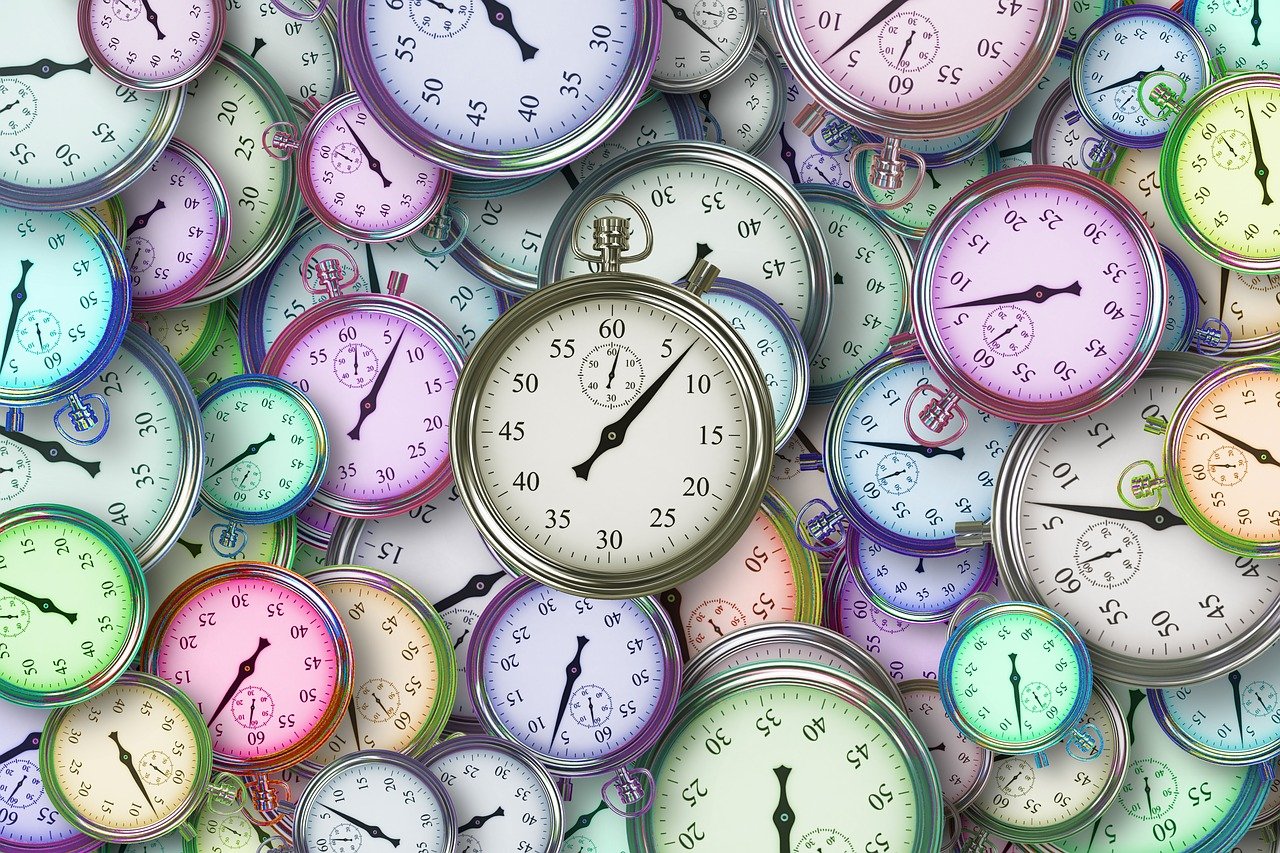
In our quest for clear vision, many of us turn to contact lenses as a convenient alternative to traditional eyeglasses. However, the environmental consequences of disposable lenses are becoming increasingly apparent. As we unveil the hidden costs of contact lens use, we’ll also explore how LASIK surgery offers not only visual freedom but also a more eco-friendly approach to vision correction.
The Unseen Environmental Toll of Contact Lenses
A Microscopic Plastic Problem
Contact lenses, while small, contribute significantly to the global plastic pollution crisis. Most lenses are made from silicone hydrogels and fluoroelastomers, materials that offer comfort but pose environmental challenges (Morgan et al., 2018).
Dr. Rolf Halden, director of the Biodesign Center for Environmental Health Engineering at Arizona State University, explains, “We found that 15 to 20 percent of contact lens wearers are flushing the lenses down the sink or toilet. This is a pretty large number, considering roughly 45 million people in the U.S. alone wear contact lenses” (Arizona State University, 2018).
The Journey of Discarded Lenses
- Wastewater treatment plants struggle to filter out these tiny plastics.
- Lenses end up in rivers and oceans, breaking down into microplastics.
- Marine life often mistakes these particles for food, leading to ingestion and potential health issues.
- Microplastics can bioaccumulate, potentially affecting human health through the food chain.
Beyond the Lens: Full Lifecycle Impact
The environmental footprint of contact lenses extends beyond disposal:
- Manufacturing processes consume energy and resources.
- Packaging materials, including blister packs and solution bottles, contribute to waste.
- Transportation and distribution add to the carbon footprint.

A study published in the journal Environmental Science & Technology estimates that in the United States alone, up to 23 metric tons of plastic from contact lenses may be entering the aquatic environment annually (Rolsky et al., 2020).
LASIK: A Clearer Vision for the Environment
As we grapple with the environmental impact of contact lenses, LASIK (Laser-Assisted In Situ Keratomileusis) emerges as a compelling alternative that offers both visual freedom and environmental benefits.
Environmental Advantages of LASIK
- Reduced Plastic Waste: By eliminating the need for disposable lenses, LASIK significantly reduces plastic waste over a lifetime.
- Decreased Chemical Usage: Contact lens wearers require cleaning solutions and eye drops, many of which come in plastic bottles. LASIK reduces or eliminates this need.
- Lower Carbon Footprint: Fewer trips to the optometrist and reduced shipping of contact lens supplies contribute to a lower carbon footprint over time.
Dr. Emma Roberts, an environmental scientist and LASIK patient, shares her perspective: “After calculating the plastic waste generated by my contact lens use over 20 years, I was shocked. LASIK not only improved my vision but also aligned with my commitment to reducing my environmental impact.”
Beyond Environmental Benefits: The LASIK Advantage
While the environmental benefits are significant, LASIK offers numerous other advantages:
- Improved Quality of Life: Many patients report increased confidence and freedom in daily activities.
- Long-term Cost Savings: Despite the initial investment, LASIK often proves more economical than years of contact lens purchases and associated products.
- Enhanced Safety: LASIK eliminates risks associated with contact lens wear, including infections from improper use or counterfeit lenses.
- Quick Recovery: Most patients experience improved vision within 24 hours of the procedure (American Refractive Surgery Council, 2021).
Dr. Michael Chen, a leading LASIK surgeon, notes, “We’re seeing an increasing number of environmentally conscious patients choosing LASIK. They appreciate that it’s a one-time procedure with lasting benefits, both for their vision and the planet.”
Making an Informed Decision: Contacts vs. LASIK
While LASIK offers numerous advantages, it’s essential to consider all options:
Contact Lenses:
- Pros: Non-surgical, allows for changing prescriptions
- Cons: Ongoing environmental impact, potential for infections, long-term costs
LASIK:
- Pros: One-time procedure, reduces environmental impact, potentially more cost-effective long-term
- Cons: Surgical procedure with some risks, not suitable for everyone
Fostering Sustainable Eye Care Practices
Whether you choose LASIK or need to continue with contact lenses, there are ways to minimize your environmental impact:
- Proper Lens Disposal: Never flush lenses; dispose of them in the trash.
- Opt for Eco-friendly Brands: Some manufacturers are developing more sustainable lens and packaging options.
- Consider Reusable Lenses: If LASIK isn’t an option, reusable lenses can reduce waste.
- Regular Eye Exams: Staying on top of your eye health can prevent the need for stronger prescriptions or additional interventions.
A Vision for a Greener Future
As we become more aware of the environmental impact of our daily choices, it’s crucial to consider how our vision correction methods affect the planet. LASIK offers a compelling solution that aligns visual freedom with environmental responsibility. However, regardless of your choice, adopting sustainable practices in your eye care routine can make a significant difference.
By making informed decisions about our vision correction methods, we can look forward to a future where clear sight doesn’t come at the cost of environmental health. Whether through LASIK or responsible contact lens use, let’s commit to seeing our world clearly while also protecting it.
Source:
American Optometric Association (2018). Contact Lens Recycle Fact Sheet. AOA. Retrieved from https://www.aoa.org/AOA/Documents/News/Contact%20Lens%20Recycle%20Fact%20Sheet.pdf
American Refractive Surgery Council. (2021). LASIK Recovery: What to Expect. https://americanrefractivesurgerycouncil.org/laser-eye-surgery-risks-side-effects/
Arizona State University. (2018). Throwing contact lenses down the drain contributes to microplastic pollution. ScienceDaily. https://www.sciencedaily.com/releases/2018/08/180819160710.htm
Morgan, P. B., Woods, C. A., Tranoudis, I. G., Helland, M., Efron, N., Jones, L., … & Nichols, J. J. (2018). International contact lens prescribing in 2017. Contact Lens Spectrum, 33(1), 28-33.
Rolsky, C., Kelkar, V., Driver, E., & Halden, R. U. (2020). Characterizing the release of plastic debris from contact lens use. Environmental Science & Technology, 54(23), 14978-14985.


